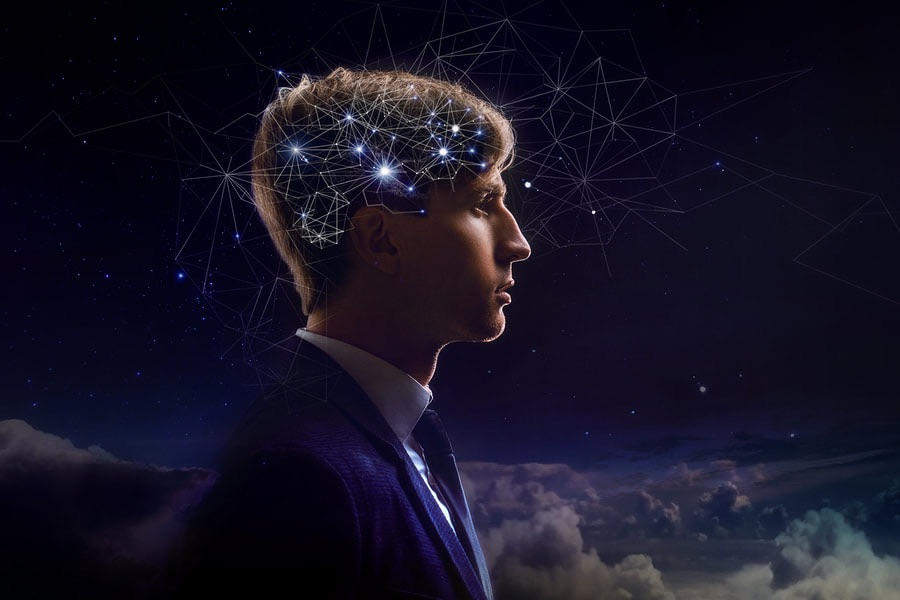|
17/6/2023 0 Comments The Metaphysics of Healing, Part 3Part 3: How to heal In this part of the blog series, I explore how metaphysical knowledge can be applied to find practical methods for healing. Let’s start with the essentials. The key to healing is awareness, love, and trust of self. Self-awareness is what shines light into the shadows, allowing you to see truth and see what needs integration; Self-love is what creates the safe space necessary to invite the darkness into the light. Self-love is the magic that alchemizes any experience (even the most painful ones) into wisdom; Self-trust teaches you to trust in your divinity even when the human aspects may seem vulnerable, confused, or unreliable. The more you practise love, awareness and trust of Self, the more you become them. While it may seem self-absorbed to focus so much on self-love, there is a reason for this. Perhaps you’ve heard of the old hermetic principle: “As above, so below; as within, so without.” This principle summarizes neatly how we need to change our internal state to cause change in our external state; all change starts with the relationship you have with the various parts of yourself. The practise of healing, then, is to apply self-love, awareness, and trust on all levels of beingness. To understand how healing works, you might ask yourself: How can I apply awareness, love and trust of self on the physical, psychological, energetic, and spiritual levels of existence? I'll provide some examples below. On the level of the body, healing emotional wounds means rewiring your nervous system. Examples of somatic healing include:
On the level of psychology, healing emotional wounds means creating healing experiences in relationships, starting with how you relate to yourself. This is because the most effective way to change a belief is to have new experiences that disconfirm old, limiting beliefs. Here are some ways to practise psychological healing:
From an energetic approach, we can practise healing in the following ways:
From a spiritual approach, we can practice healing in the following ways:
If you feel overwhelmed by this list, remember that the most important thing is not what you do but how you do it: Ideally, with a lot of compassion. Perhaps you’ve noticed that there is one method that is mentioned repeatedly: conscious breathing. If I had to choose one method or tool for integration, it would be conscious breathing. Conscious breathing is pure magic; it allows you to calm your mind, become more present, regulate your nervous system, remove energy blocks, and feel connected to your divinity. It is the most simple, yet most powerful tool that I know for integration, and it’s always available to you.
I’ve also provided my formula for how to heal below: How to heal = Making a choice to heal + conscious breathing + self-love practices + allowing the natural process to unfold + trust. I hope this blog post has been helpful, and even inspired you to ponder: what’s your formula for healing? In the next part of this blog series, I will discuss how healing changes through self-realization, and whether there is an end to it.
0 Comments
17/6/2023 0 Comments The Metaphysics of Healing, Part 2(This is the second part of the blog series, The Metaphysics of Healing.) Part 2: What does it mean to heal? Hundreds of therapy modalities have been developed in an effort to explain what it takes to heal psychologically. Being a metaphysician, I like to explore the truth from many perspectives, and then distil the matter to its essence. Below, then, is my attempt at defining healing. If you prefer to keep things simple, feel free to skip to the end of this post, where I describe my ‘formula for healing’. Healing emotional wounds can mean different things, depending on which dimension of the self we approach it from:
While it is helpful to approach healing in a holistic way, going to the source (the spiritual dimension) is the most essential level to focus on in the healing process, because it is the dimension that permeates and encompasses all the other dimensions. To use an analogy, healing is similar to pulling weeds: You can reach temporary, superficial change by cutting the weeds. To have a long-lasting effect, however, it is necessary to pull the weeds from the roots, so they don’t grow back. In practise this means that while it is important to take care of the body and the mind and have energy awareness during your healing process, it is absolutely essential to address any feelings of separation that you (or an aspect of you) experience in relation to your divine core. One way to describe this spiritual approach to healing is integration. ‘Integration’ is the natural process when the seemingly separate aspects of the self are gathered together and return to a sense of inner oneness or wholeness. Like the facets of the diamond, the aspects of the self might still maintain their individual placement and their unique way to reflect the light, yet they recognize themselves as one facet of the diamond. 'Integration' is the natural process when the seemingly separate aspects of the self are gathered together and return to a sense of inner oneness or wholeness Integration is the key to any long-lasting psychological transformation or healing. It could even be said that integration is the ultimate healing. In practical terms, it means that the divine and the human facets are in awareness, acceptance and allowing of each other. Both in the New Age and the psychotherapy field, there is much talk about shadow work, parts work, inner child work, etc. These are different approaches to integration. The concept was first popularized by the psychoanalyst Carl Jung, although similar ideas have existed for millennia in various cultures (for example, Buddhists teach the concept of inviting and accepting your inner demons). To understand the essence of healing, it is also necessary to mention self-love. Self-love is both the cause and the effect of integration Acceptance, awareness, and trust of self are both the way and the destination of healing. There can be no true, lasting psychological transformation or healing without self-love.
The definition, or formula that I propose, thus, is: Healing = integration = self-awareness + self-love + self-trust In the next blog post, I will outline how integration works in practise and what the various methods are. 17/6/2023 0 Comments The Metaphysics of HealingWhat is the relationship between healing and self-mastery? Does embodied enlightenment mean that you are “fully healed”? And how does integration play into all of this? You’ve probably noticed that healing is inevitable on the path of self-realization and embodied enlightenment. In fact, the quest for healing (together with failed attempts at healing) is often the catalyst for spiritual awakening. Have you ever thought about what healing emotional wounds really means? In this blog series, I will explore this topic using both my clinical and metaphysical background. As I like to explore subjects in-depth, I’ve divided it into four parts: 1) What causes emotional wounds, 2) What does it mean to heal, 3) How to heal, and 4) Does healing ever end? Let’s dive into the first part. Part 1: What causes emotional wounds? To understand healing, we must first understand what causes emotional wounds or psychological injuries. Contrary to the mainstream clinical approach, I posit that we are multidimensional beings: psychological injuries don’t take place only on the mental level, but also on the energetic, physical, and spiritual levels of being. Below is a description of how imbalances develop and manifest in the different dimensions of human experience. Psychological injuries manifest on the mental, energetic, physical and spiritual levels of being. On the level of physiology, a wound or imbalance is the result of a survival threat (or a perceived threat). It is noteworthy to mention that because we are a social species, social threats – such as bullying, judgment or rejection – are perceived by the mind as survival threats. In humans, the nervous system is designed to regulate emotions, to easily shift from one emotional state to another, depending on what is needed. Prolonged or intense emotional injuries – especially ones that are experienced in childhood – can cause dysfunctions in the nervous system, as well physical changes in the brain. Emotional wounds, therefore, take place in the body just as much as in the mind. On the mental level, emotional wounds are the result of neglecting physical or emotional needs in a continuous or severe way, causing the individual to develop beliefs which are adaptive and necessary for survival in the short-term, but become limiting in the long run. Without limiting beliefs, an emotionally painful experience will dissolve quite easily provided that our basic needs are met. On the energetic level, any wound, emotional or physical, can be seen as a manifestation of an energetic imbalance, usually in the form of “stuck energy”. Emotional energy is meant to be in a state of flow, but when this energy is not allowed to flow freely, it becomes stuck. Stuck energy means that an aspect of the self is stuck in a vibrational state of low frequency. In essence, every emotional wound or trauma is the result of feeling separated from the divine consciousness and love at the core of our being. On the spiritual level, any suffering or sense of emotional pain is the result of perceived separation between the human and the divine. This is the case even when the individual doesn’t believe in God. Most humans have ‘spiritual abandonment issues’ on a deep, often unconscious layer: We feel abandoned by God or by our Higher Self. In everyday life this is often experienced as loneliness, low self-worth, or a lack of belonging. Although this separation from our divine roots is only an illusion, it can feel very real on the human level. In essence, every emotional wound or trauma is the result of feeling separated from the love at the core of our being. It may seem that these different dimensions of experience are paradoxical, yet they can actually all be real and valid at the same time: Just as you are not either emotional or physical, you are not either human or divine – you are all of that, and more, all at once! Another important thing to remember is that while imbalance can occur on many levels of our beingness, the divine essence of our being is never damaged, imbalanced, or otherwise tarnished. The human body, the mind and even our energy body are all highly susceptible to imbalance, yet the soul and our core consciousness are eternal, invincible, and limitless. At the core of our being, there is never a ‘need’ to heal, because there is never anything that is broken or not whole. To truly understand and receive this truth is the most important step in healing. From the perspective of soul, there is nothing to heal because we are never broken – to understand and accept this truth is the most important step in healing. In the next blog post, I will explore what it means to heal.
|
Hello! I'm Kim.On this blog I cover topics related to awakening and self-realization; metaphysical psychology; consciousness; creativity; and multidimensional living. Archives
February 2024
Categories |
Search by typing & pressing enter




 RSS Feed
RSS Feed